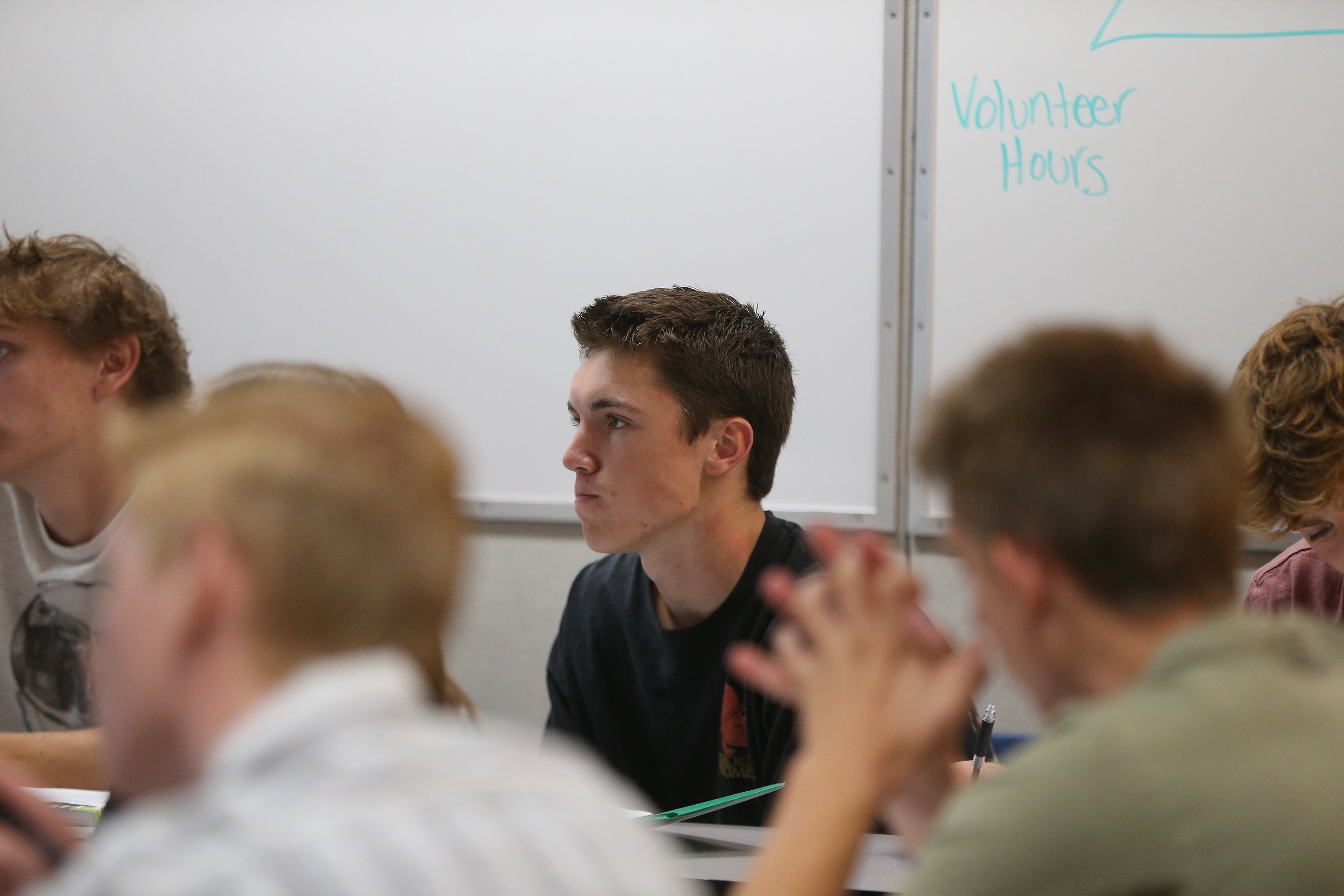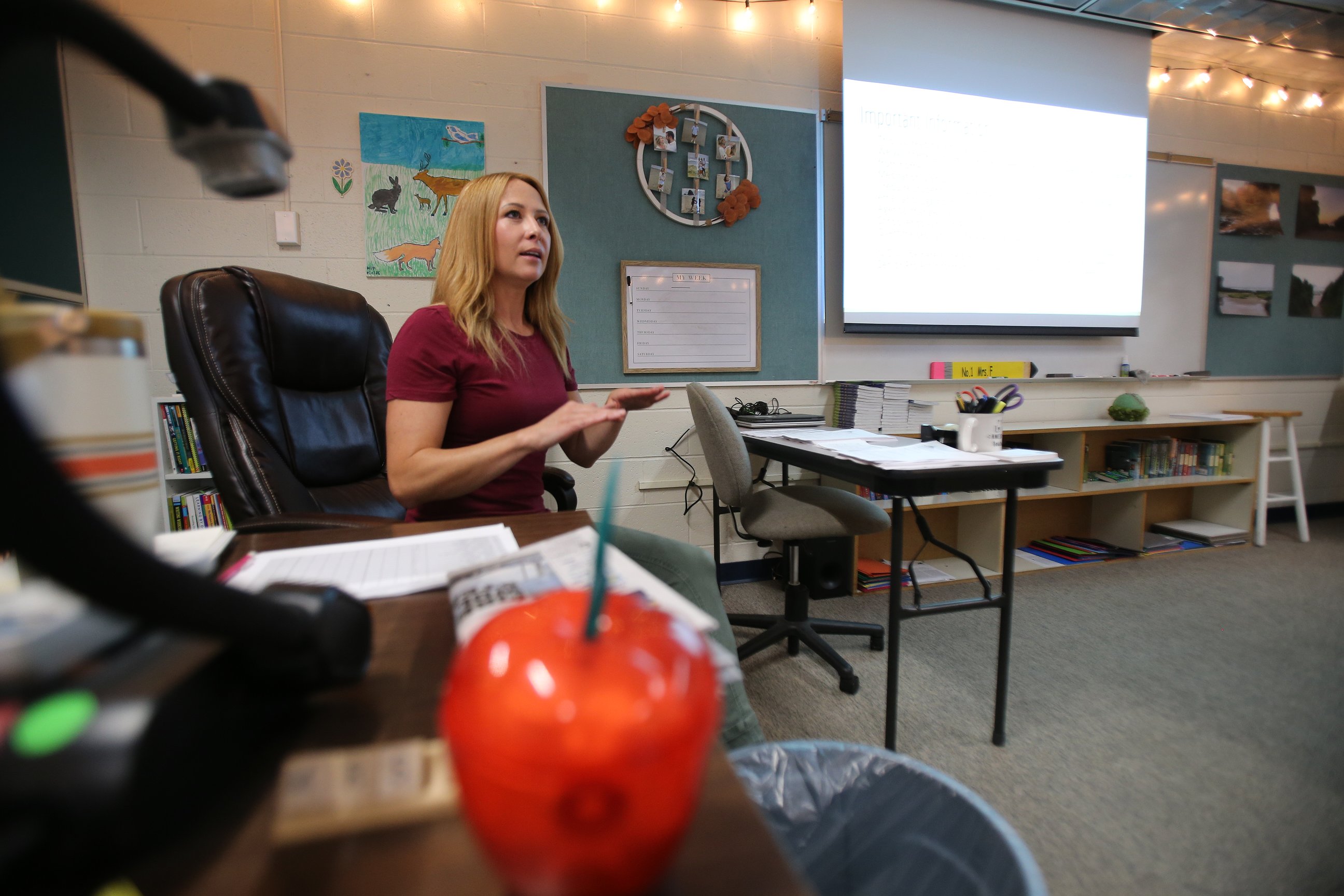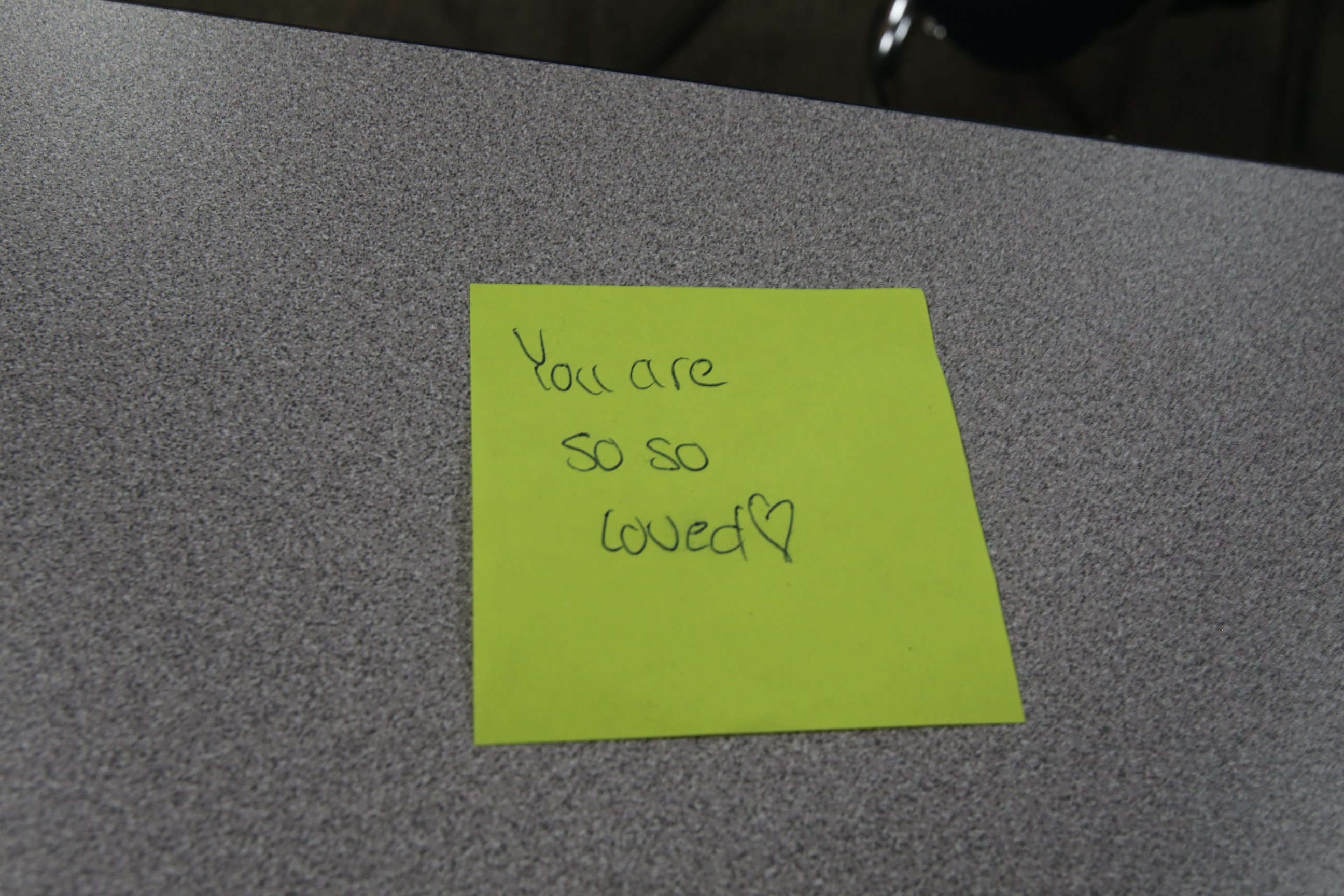Back to school, back to normal
A new school year began Tuesday, welcoming students back to the grand halls of academia.
Old friends greeted each other at their lockers. Teachers smiled as their classrooms filled up and it was business as usual with nary an indication of the learning disruption that took place when the COVID-19 pandemic struck four-and-a-half years ago.
Students who were in kindergarten in the spring of 2020 are now fifth graders. This year's seniors were in seventh grade when schools were closed as a novel coronavirus blazed around the world.
"Right in the middle of their middle school experience, the pandemic happened," Coeur d'Alene High School dual-credit English teacher and senior project coordinator Shawnna Fields said Tuesday.
The Class of 2025 experienced an abundance of shifting policies and procedures as school districts configured ways to navigate the pandemic, from mask mandates and quarantines to remote learning and cohorting.
"For a couple of years, COVID was the main topic for all our cabinet meetings and most of our board meetings — how to keep kids and staff safe, how to educate despite restrictions — all of that were constant topics of discussion," said Katie Graupman, curriculum coordinator for the Coeur d'Alene School District. "Now we're gearing up for the new year, and I haven't heard anything about these first two questions. It's interesting to take a moment and realize that."
In the fall of 2020, the Coeur d'Alene School District opened the Coeur d'Alene eSchool, providing an online option for families that desired consistency as well as lowered risks of their students contracting COVID in school settings.
Fields was among the teachers who chose to leave the traditional classroom and teach remotely, which allowed her flexibility as she and her own family with young children navigated the unknowns.
“I felt like I thrived in that environment, but you were hit with these hurdles in-person teachers didn’t have to come across," Fields said.
Some students would block out their cameras so they couldn’t be seen. Some would say they had technical difficulties. Some had no Wi-Fi as they traveled with their parents.
“The accountability standard was eliminated, and that was really hard because on top of that students were getting sick and dealing with loss and trauma," Fields said. "There really wasn’t an attendance standard, that was out the window. Participation standards were limited."
Kids' instruction varied as did their home lives and internet access. In a 2022 NPR article, "6 things we've learned about how the pandemic disrupted learning," it's noted that students learned less while remote and students who attended higher poverty schools experienced more learning loss than their peers.
Fields said the compassion component of education became even more important than it was prior to the pandemic.
"I tried to make my classroom so comforting because I had kids from all these different areas, but we had to be rigorous at the same time so it was tough," she said. "We had a lot of sit-downs and classroom discussions to ask, ‘How are you doing?' As much as we were asked to have academic rigor back on the table, we had to be really straightforward in what our kids had gone through.”
They couldn’t simply snap back into the Friday pop-quiz routine. Students were in different places mentally, emotionally and academically.
"Some of them literally had been home secluded for the past year or had family members die,” Fields said. “It was just too much. The social weight that school staff and teachers felt has increased so much since COVID."
Fields said all of these factors have made her a better teacher.
“Through all the COVID stuff, I realized I need to be more connected to my students. I need to humanize this role,” she said, adding how important it is for her students to feel safe and welcome when they are in her classroom.
“When they come in here, it’s going to be challenging but they can do it, and they want to be here,” she said.
She said the challenges also augmented the resilience of the Class of 2025.
“I think this class has adapted so well to the plethora of learning platforms that have been thrown at them since they were in seventh grade," she said. "They have risen to the challenges that we have set for them that they are going to be able to manage their time and be more prepared for their post-secondary goals than some of our other classes have been.”







